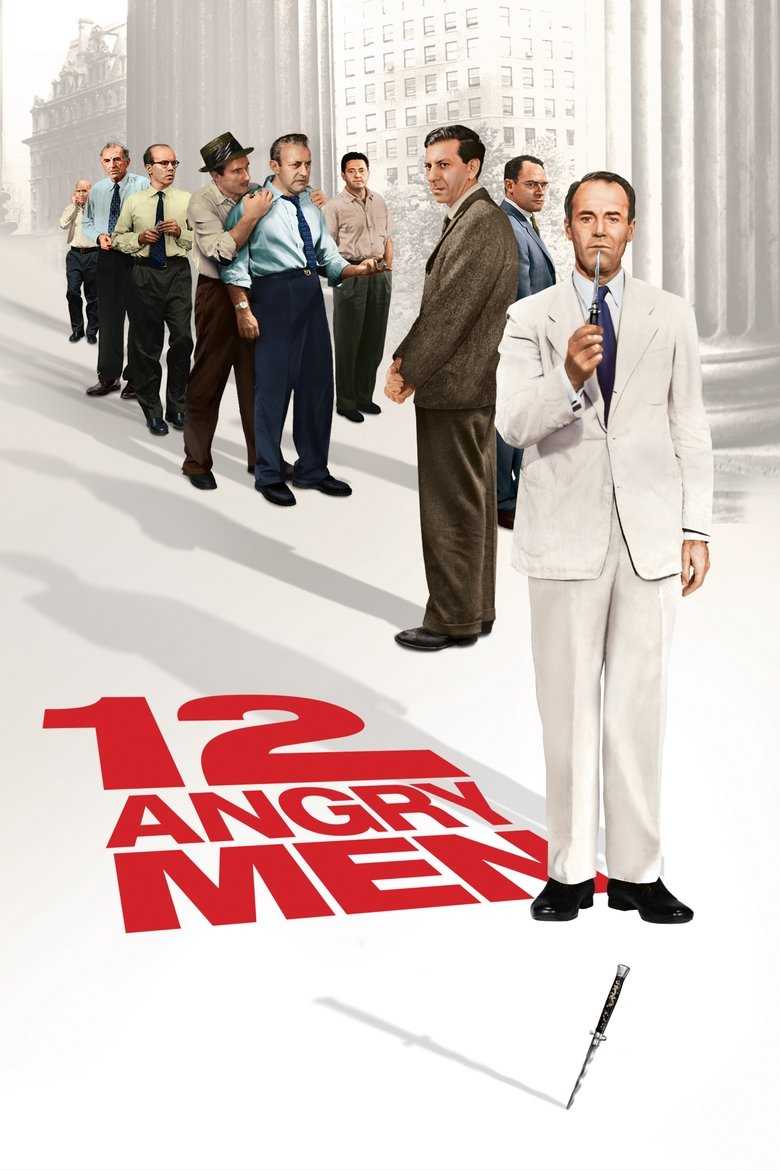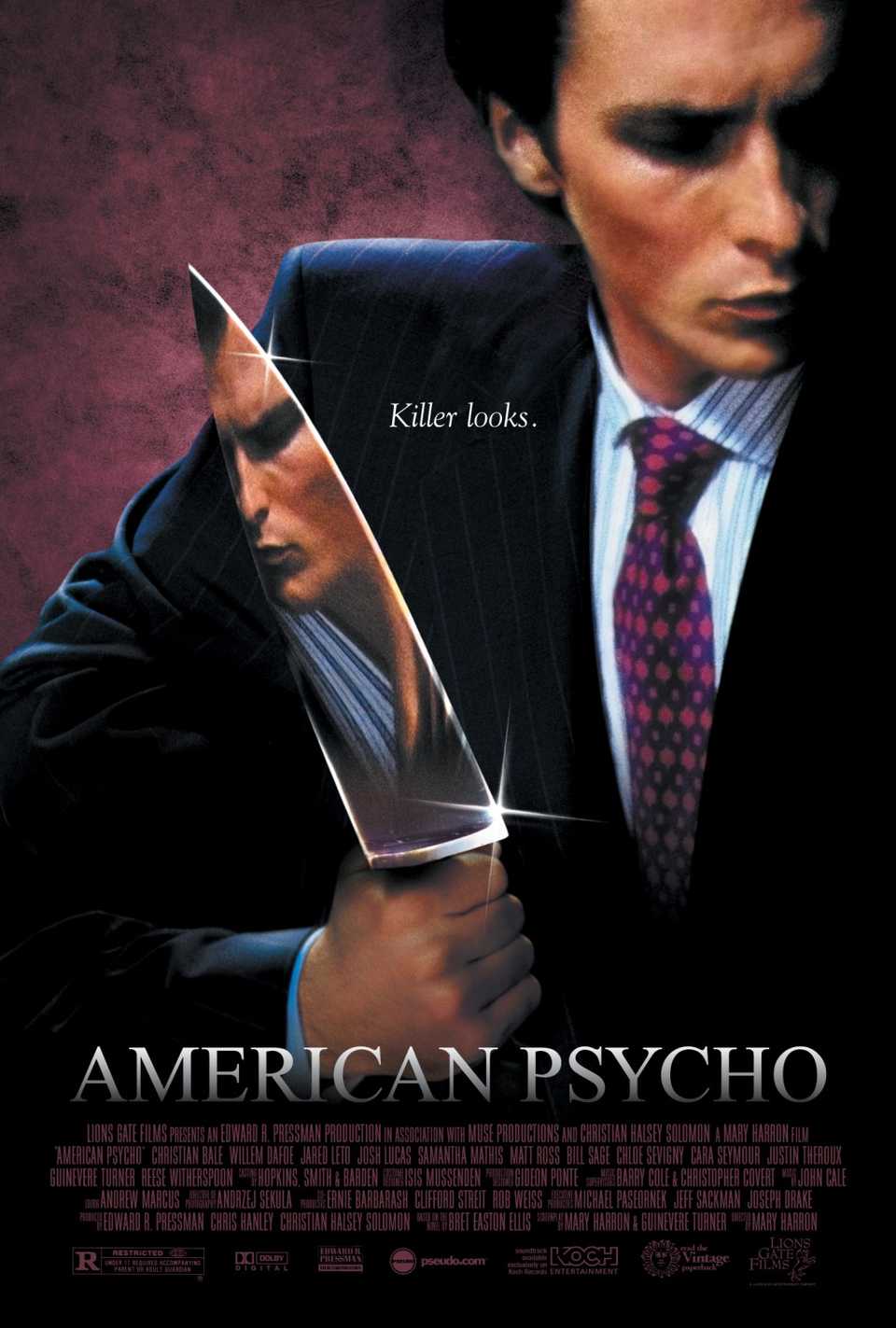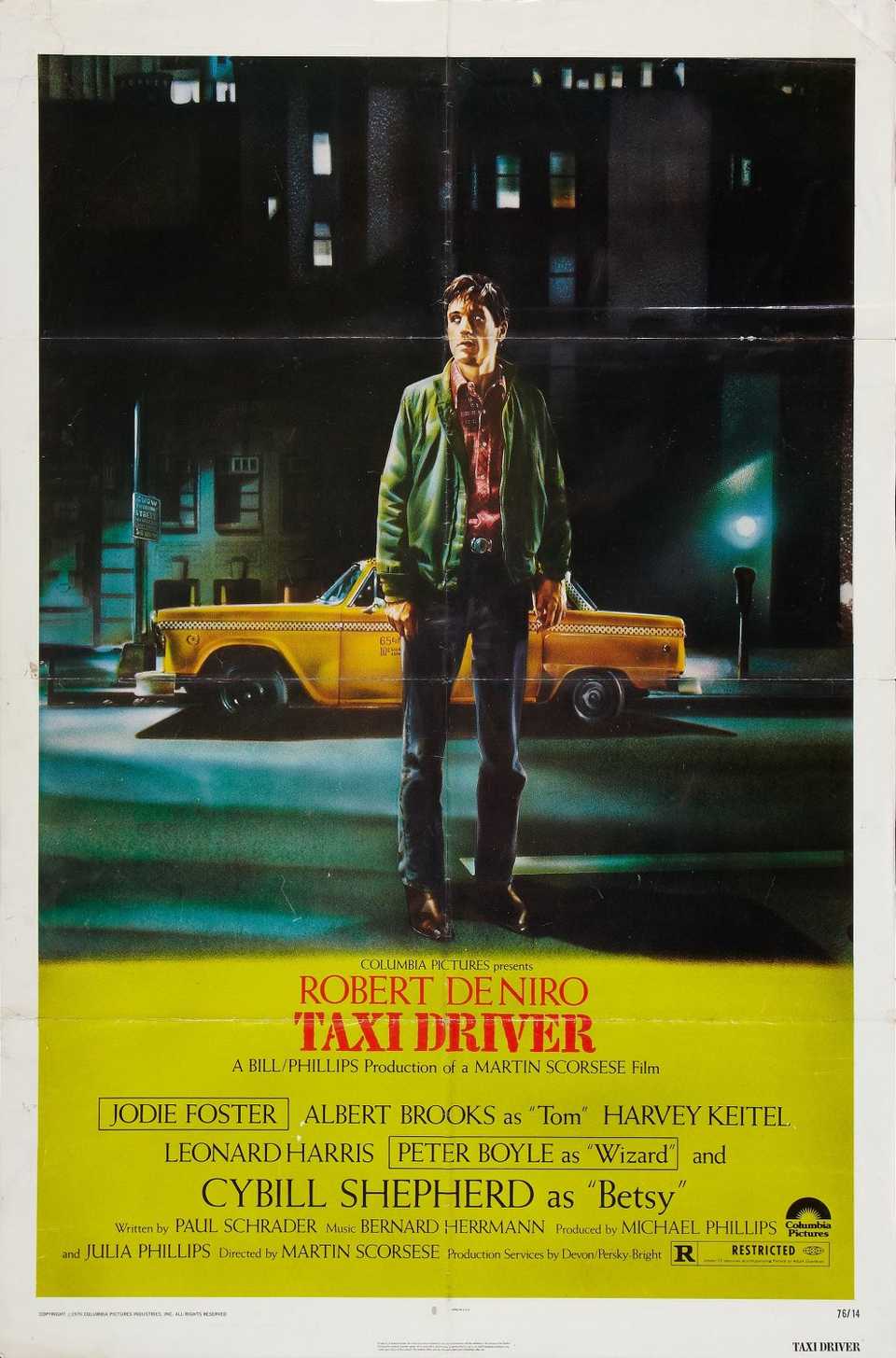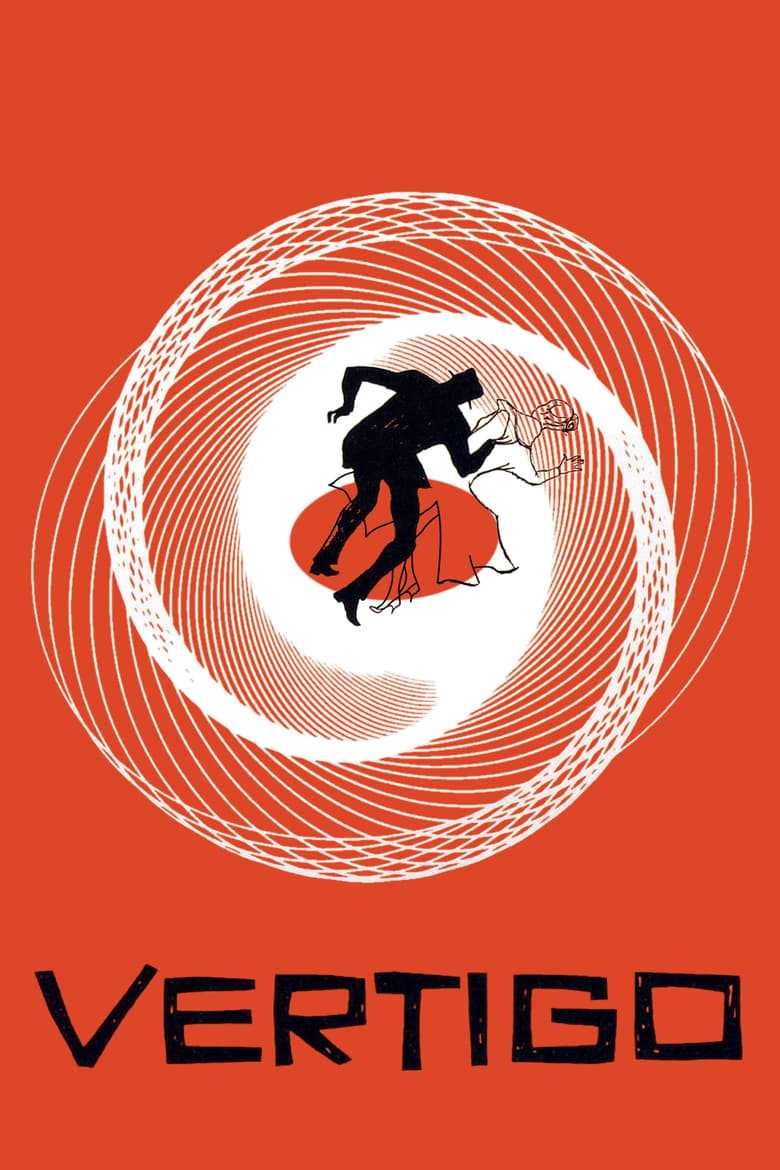10 Movies That Get Us To Rethink What It Means To Be A Man
Like most fields of entertainment, the upper echelons of the film industry have traditionally been dominated by men, resulting in the historical prevalence of movies with macho tropes. Hollywood’s version of masculinity, in particular, both informed and reflected the relationship between the sexes and stereotypes within the male gender throughout the 20th century. Yet, at the same time, filmmakers have examined what it means to be a man with critical eyes almost since the birth of cinema, and certainly many decades before terms like “toxic masculinity” entered popular parlance.
Some of the greatest works of cinema ever produced have made the nature of manhood their main focus. Among them, some movies have got us to rethink the meaning of masculinity, and whether the predominant gender roles in society are, in fact, balanced or healthy. Typically, these movies portray male characters with a warped sense of how they should act as a man, or exemplify masculine behavior that’s designed to repulse their audience. The secret of these portrayals, however, is that they’re in reality, depicting men who are believable enough to move viewers into rethinking their own beliefs about manhood.
10 12 Angry Men (1957)
Directed By Sidney Lumet

12 Angry Men
- Release Date
- April 10, 1957
- Runtime
- 97 minutes
- Director
- Sidney Lumet
- Writers
- Reginald Rose
- Producers
- Henry Fonda
Cast
 Martin BalsamJuror 1
Martin BalsamJuror 1 John FiedlerJuror 2
John FiedlerJuror 2
12 Angry Men is a courtroom drama centered around a jury deliberating the fate of a young Spanish-American accused of patricide. As discussions unfold, the jurors' biases and preconceptions surface, transforming what seemed to be a straightforward decision into a tense examination of justice and morality.
- Main Genre
- Drama
- Studio(s)
- Metro-Goldwyn-Mayer
- Distributor(s)
- Metro-Goldwyn-Mayer, United Artists
12 Angry Men is a uniquely brilliant insight into gender roles in society for a variety of reasons. Firstly, the movie’s title and premise draws attention to the fact that until 1973, certain American states didn’t allow female jurors. Its all-male jury initially votes overwhelmingly in favor of sending a teenage boy accused of murder to the electric chair.
For most of its 96 minutes, though, the majority of the anger in the room is expressed by one specific character, who embodies the hard-headed aggression often associated with negative masculine tropes. Lee J. Cobb’s Juror Number Three is hell-bent on convicting the young defendant, and furiously rails against 12 Angry Men’s protagonist, played by Henry Fonda, for questioning such a verdict, to the extent that he even lunges at Fonda’s character momentarily. The movie cleverly unravels the motivations behind the juror’s macho sentiments, until he breaks down over his estrangement from his own teenage son.
9 American Psycho (2000)
Directed By Mary Harron

Your comment has not been saved
American Psycho
- Release Date
- April 14, 2000
- Runtime
- 101 minutes
- Director
- Mary Harron
- Writers
- Bret Easton Ellis, Mary Harron, Guinevere Turner
Cast
Based on the book of the same name by Bret Easton Ellis, American Psycho follows Patrick Bateman (Christian Bale) an investment banker in New York in 1987 who leads a double life as a serial killer. As investigators circle Bateman after the disappearance of a colleague, he finds himself trapped in a spiral of murder and excess, unable to stop himself from giving in to his increasingly dark urges. Also stars Willem Dafoe, Jared Leto, Justin Theroux, and Reese Witherspoon.
- Studio(s)
- Lionsgate
- Distributor(s)
- Lionsgate
Few characters can make a more compelling case for their basis in reality than American Psycho’s Patrick Bateman. Actor Christian Bale received a rapturous reception when he visited the New York Stock Exchange in 1999, from money men who heard that he was about to play Bateman on the big screen. It’s worth remembering that Patrick Bateman is American Psycho’s eminently quotable central psychopath, who murders multiple women onscreen and may well have disposed of several more off-camera.

American Psycho Explained: What It Really Means
American Psycho is often cited as a complex and confusing film, but it's too often misinterpreted due to its ending - here's what the movie means.
The joke of this pitch-black satire of Wall Street is that none of Bateman’s misogynistic, racist, investment banker friends seem to notice or care what he’s done. Apparently, the real-life bankers that Bale met in New York didn’t either.
8 Fight Club (1999)
Directed By David Fincher

Your comment has not been saved
Fight Club
- Release Date
- October 15, 1999
- Runtime
- 139 minutes
- Director
- David Fincher
- Writers
- Chuck Palahniuk, Jim Uhls
- Producers
- Art Linson, Ceán Chaffin
Cast
 Narrator
Narrator Tyler Durden
Tyler Durden
Fight Club, released in 1999 and directed by David Fincher, stars Edward Norton as an insomniac who forms an underground fight club with a soap salesman, played by Brad Pitt.
- Main Genre
- Drama
- Studio(s)
- 20th Century
- Distributor(s)
- 20th Century
Edward Norton and Brad Pitt both put in career-defining performances in David Fincher’s Fight Club, as two different sides of the same male ego. Norton’s character is afflicted by physical and mental health problems due to his dissatisfaction with his life, and seeks an outlet to express how he feels about his problems, as well as his own insecurities. In the end, he finds that outlet in the fight club of the movie’s title, which mirrors in the basest terms the raw aggression that men often use to let out their emotions.
Fight Club prefigures outwardly male social phenomena that would appear in the decades following its release.
Pitt’s Fight Club character Tyler Durden is the epitome of machismo, an ideal to which Norton’s central anti-hero aspires with dangerous consequences. Fight Club prefigures outwardly male social phenomena that would appear in the decades following its release with remarkable accuracy, from online incel forums to fringe alt-right political movements.
7 Lolita (1962)
Directed By Stanley Kubrick

Your comment has not been saved
Lolita
- Release Date
- June 13, 1962
- Runtime
- 153 minutes
- Director
- Stanley Kubrick
- Writers
- Vladimir Nabokov, Stanley Kubrick, James B. Harris
Cast
 James MasonHumbert Humbert
James MasonHumbert Humbert Shelley WintersCharlotte Haze
Shelley WintersCharlotte Haze
Lolita, directed by Stanley Kubrick, is a film adaptation of Vladimir Nabokov's controversial novel. Starring James Mason, Shelley Winters, and Sue Lyon, the movie explores the complex and morally contentious relationship between a middle-aged professor and a young girl. The film’s provocative subject matter prompted significant controversy upon its release and remains a subject of critical analysis in cinematic history.
- Main Genre
- Drama
- Studio(s)
- Anya Productions
- Distributor(s)
- Metro-Goldwyn-Mayer
Stanley Kubrick’s movie adaptation of Vladimir Nabokov’s satirical novel was a difficult feat to pull off, since the novel’s protagonist is a hebephile who develops an obsession with a 12-year-old girl. To avoid censorship, the age of the titular character Lolita was changed to 17, although she was played by 14-year-old actor Sue Lyon. In addition, Kubrick’s Lolita features James Mason as Humbert Humbert, the man infatuated with its eponymous teenager, and Peter Sellers as his Machiavellian rival, Clare Quilty.
A hebephile is someone who displays signs of hebephilia, the condition of expressing a specific sexual interest in young adolescents going through puberty. The term is primarily used for the categorization of sex offenders.
While the film necessarily downplays the elements of the novel that overtly depict Humbert’s illicit affair with Lolita, it still manages to render the much older man’s skin-crawling infatuation with a young teenage girl with excruciating clarity. When Kubrick began developing the project, he was told the movie was impossible to make. Not only did he prove his doubters wrong, but he managed to paint one of cinema’s most compelling pictures of a sexual relationship underscored by deeply unhealthy power imbalances in favor of the man who instigated it.
6 Taxi Driver (1976)
Directed By Martin Scorsese

Your comment has not been saved
Taxi Driver
- Release Date
- February 9, 1976
- Runtime
- 114 Minutes
- Director
- Martin Scorsese
- Writers
- Paul Schrader
Cast
Martin Scorsese's classic 1976 film stars Robert De Niro as Travis Bickle, a Vietnam veteran turned New York City cab driver whose increasingly disturbed mental state due to his PTSD begins to drive him to more and more violent actions as he attempts to rid the city of what he sees as the "scum" on the streets. Jodie Foster, Harvey Keitel, Cybill Shepherd, and Albert Brooks also star in the film.
- Main Genre
- Drama
- Studio(s)
- Bill/Phillips Productions
- Distributor(s)
- Columbia Pictures
Martin Scorsese’s 1976 masterpiece Taxi Driver is about many things, including loneliness, political disenfranchisement, post-traumatic stress disorder, racism, and the record crime levels in New York during the 1970s. However, one of the fundamental aspects of quintessential anti-hero Travis Bickle’s character is his unhealthy attitude to women. Travis frequents a porn theater at night, and takes his love interest Betsy on a date there, much to her disgust. When Betsy subsequently ignores Travis, he begins stalking her, and violently confronts her at her place of work.
Taxi Driver ingeniously draws connections between male loneliness, sexual frustration and violent tendencies.
Travis also appoints himself the savior of teenage prostitute Iris, played by Jodie Foster, who is herself tangled up in a pedophilic relationship with her pimp Sport. The obsession that Travis develops with saving Iris ultimately appears to result in her rescue from sexual abusers, but this conclusion to the movie doesn’t change the discomfort we feel about Travis Bickle’s own unbalanced sense of manhood.
Taxi Driver ingeniously draws connections between male loneliness, sexual frustration and violent tendencies. Its real genius is in making us sympathize with Travis, so that we’re forced to confront ourselves about being on his side when he behaves repulsively or commits acts of extreme violence.
5 Vertigo (1958)
Directed By Alfred Hitchcock

Your comment has not been saved
Vertigo
- Release Date
- May 28, 1958
- Runtime
- 128 minutes
- Director
- Alfred Hitchcock
- Writers
- Alec Coppel, Samuel A. Taylor
Cast
 James StewartDet. John 'Scottie' Ferguson
James StewartDet. John 'Scottie' Ferguson Kim NovakMadeleine Elster / Judy Barton
Kim NovakMadeleine Elster / Judy Barton
Vertigo: Released in 1958, Vertigo is a psychological thriller directed by Alfred Hitchcock. The film follows a retired San Francisco detective with acrophobia, played by James Stewart, as he investigates the peculiar behavior of an old friend's wife, portrayed by Kim Novak, leading to a complex obsession.
- Studio(s)
- Paramount Pictures
- Distributor(s)
- Paramount Pictures, Universal Pictures
Vertigo is, for many, the crowning achievement of its director Alfred Hitchcock’s film career. The movie explores the male obsession with femininity, as embodied by one of Hitchcock’s most iconic blondes, Kim Novak. James Stewart’s Scottie Ferguson is supposed to be a private investigator, yet he ends up tailing Novak’s Judy Barton for all the wrong reasons.

10 Alfred Hitchcock Thrillers That Still Hold Up Today
Alfred Hitchcock directed some of the best thrillers of all time, and the Master of Suspense still has the ability to shock modern audiences.
The scene in which Scottie sees Judy enter his bedroom, identical in appearance to the woman he knew and loved as Madeleine, is one of the all-time great examples in cinematic history of masculinity being presented as a tragic flaw. The vivid, surrealistic lighting of the scene gives it the appearance of a dream, while its musical accompaniment, Vertigo’s most famous piece “Scene d’Amour”, effectively won an Oscar 54 years after its initial release.
Scottie’s all-consuming feelings for Madeleine have fatal consequences at the end of Vertigo, completing the lifecycle of another Hitchcock blonde. Nevertheless, the movie does more than any other by the legendary director to point the finger at its male protagonist for what happens to Judy Barton.
4 Cairo Station (Bab al-Hadid) (1958)
Directed By Youssef Chahine
Egyptian cinema experienced a golden age in the late 1950s and early 1960s, with young director Youssef Chahine at its forefront. Chahine’s most celebrated movie, Cairo Station (Bab al-Hadid), a classic that was previously available on Netflix, stars the filmmaker himself as Qinawi, a young homeless man who’s adopted by a local newspaper seller when he arrives in Egypt’s capital.
Qinawi harbors a dark secret, visible only in the cutouts of erotic magazines that he sticks on the walls of the shed he’s been given to live in. Like so much of Egyptian society then and now, he’s sexually repressed, and his inability to express this side of his masculinity consensually has dire consequences, both for the female characters in Cairo Station and for Qinawi himself.
3 A Streetcar Named Desire (1951)
Directed By Elia Kazan

Your comment has not been saved
A Streetcar Named Desire
- Release Date
- September 19, 1951
- Runtime
- 125 Minutes
- Director
- Elia Kazan
Cast
 Vivien Leigh
Vivien Leigh
A Streetcar Named Desire (1951) is an adaptation of Tennessee Williams' Pulitzer Prize-winning play, directed by Elia Kazan. The film stars Vivien Leigh as Blanche DuBois, a fragile and unravelling Southern belle who moves in with her sister Stella and confronts Stella's domineering husband, Stanley Kowalski, played by Marlon Brando. The tension between Blanche and Stanley serves as the central conflict, highlighting themes of desire, mental illness, and societal change.
Marlon Brando’s career-defining breakout role as the brutish Stanley Kowalski in A Streetcar Named Desire is one of the best ever big-screen renderings of machismo. Not only did Brando’s portrayal of Kowalski announce Brando to the world, but it added depth to a character who could so easily have been caricatured as a straight-up monster.
As Brando plays him, Kowalski isn’t just a raging ball of testosterone. He’s a man seething with a sense of frustration and indignity, whose insecurities about his own masculinity simmer just beneath the surface, and only occasionally boil over into exaggerated displays of violence. Kowalski is only all man if that means someone who cares so much about their own manhood that it ends up hurting them and everyone they care about.
2 Boyhood (2014)
Directed By Richard Linklater

Your comment has not been saved
Boyhood
- Release Date
- June 5, 2014
- Runtime
- 163minutes
- Director
- Richard Linklater
- Writers
- Richard Linklater
Cast
 Ellar Coltrane
Ellar Coltrane
Directed by Richard Linklater, Boyhood depicts the childhood and adolescence of Mason Evans Jr., a young man from Texas whose coming-of-age during the mid-2000s is the main focus of the film. Linklater shot the film over the course of 12 years, chronicling Mason's childhood in time with the growth of his actor, Ellar Coltrane. Besides Coltrane, Patricia Arquette, Ethan Hawke, and Lorelei Linklater also star.
- Studio(s)
- Universal Pictures
- Distributor(s)
- Universal Pictures
Boyhood is Richard Linklater’s 12-year movie magnum opus about a boy’s growth into manhood. This profoundly authentic film was shot in real time, several days a year between 2001 and 2013, until its protagonist, Mason Jr., turned 18 and graduated from high school. Throughout his childhood, Mason is forced to contend with an unstable family life, and is provided with any male authority figure his overburdened mother can find, in the absence of his irresponsible father.

10 Movie Dads That Redditors Think Represent Positive Masculinity
The users of Reddit have helpfully identified a number of the best dads to have appeared in the movies.
From the violently alcoholic college lecturer and overbearing army veteran his mother moves the family in with, to Mason’s first boss in a diner kitchen and his school photography teacher, he’s presented with a succession of male role models, none of whom seem to fully understand him. His father, played by Ethan Hawke, does get Mason on a deeper level and is emotionally giving when he’s there. The problem is, he isn’t there most of the time.
Boyhood brilliantly exposes the gender imbalances within a modern nuclear family. It adeptly contrasts what Mason describes as the “parade of drunken a**holes” who’ve served as father replacements in his life with the steadfast presence of his long-suffering mother, played by Patricia Arquette. In this way, the movie demonstrates one of the potential shortcomings of manhood in today’s society.
1 Shame (2011)
Directed By Steve McQueen

Your comment has not been saved
Shame
- Release Date
- December 2, 2011
- Runtime
- 101 minutes
- Director
- Steve McQueen
- Writers
- Abi Morgan, Steve McQueen
Cast

 Carey Mulligan
Carey Mulligan Alex Manette
Alex Manette
Shame is an NC-17 drama about a sex addict named Brandon, played by Michael Fassbender. Brandon is living a very cultivated private life, but his world is flipped upside down when his sister Sissy, played by Carey Mulligan, begins staying with him. The film was directed by Steve McQueen and was released in 2011.
- Studio(s)
- Searchlight Pictures
- Distributor(s)
- Searchlight Pictures
Steve McQueen’s movieShame is an extraordinarily powerful movie addressing the unhealthy relationship that many men have to sex, which often goes hand-in-hand with an aversion to physical and emotional intimacy. Its protagonist Brandon Sullivan, played by Michael Fassbender, is a sex addict who relies on transactional forms of sexual activity to satisfy himself. At the same time, he’s unable to make a physical connection with a woman he dates, despite the two of them sharing a mutual attraction and their date going well.
Brandon is a particularly painful example of a social phenomenon that’s more widespread than it is visible, and is symptomatic of the lack of intimacy in the world today. Men are disproportionately affected by addictions to sex and pornography, and are more likely to suffer sexual dysfunctions related to intimacy issues and performance anxiety than women.

How The Power of the Dog Subverts The Masculinity Trope In Westerns
Netflix's The Power of the Dog reveals the latent repression and self-denial underlying the rugged masculine cowboy archetype of the Western genre.
Shame shows us how the expectation for men to display these characteristics can often lead them to close themselves off from the world, resulting in a vicious cycle of dysfunctionality and shame. This profound insight makes it one of the most compelling movies that gets us to rethink what it means to be a man.















Your comment has not been saved